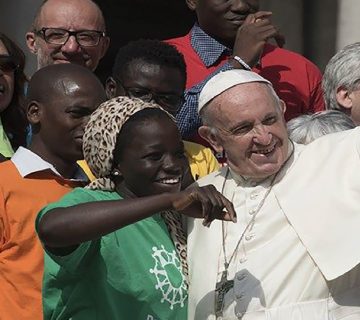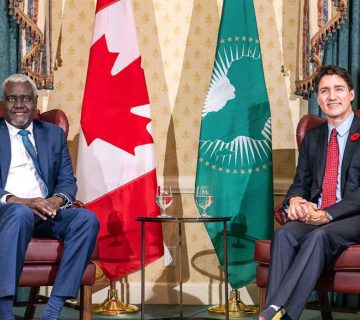Deaths in the Shakahola forest, dubbed the “Shakahola Forest Massacre” or “Shakahola Mass Suicide,” ushered in a new era of interrogating cultism and religious extremism amidst the constitutional provisions – freedom of religion or belief in Kenya (Article 32 of the Constitution). The Shakahola cult has become a buzzword in Kenya, where law enforcement professionals and members of civil society grapple with the naming and framing of the hideous nature of the crime as religious cultism and extremism. More than 200 bodies have been exhumed so far, and the numbers are predicted to increase in the coming weeks.
The exploration of mass graves in Shakahola forest, where over 240 people are reported to be buried, was considered so heinous that the Kenyan president referred to it as similar to ‘terrorism’ and Mackenzie as a ‘criminal’ that belongs in jail. The president’s remarks over the incident prompt scholars and experts to look at the potential of every religion and religious institution as spaces that can be misused by fake or extremist preachers.
The investigation by the Kenyan police in the Shakahola forest implicates Pastor Paul Mackenzie from the Good News International Church. He is alleged to have converted people to his beliefs and engaged them in fasting, eventually encouraging them to starve themselves so that they could meet Jesus. Pastor Mackenzie had been under scrutiny since 2017 on radicalization charges. However, blunders in investigations set him free. Even in 2019, he was arrested again on accounts of incitement to disobedience of the law and also for possession and distribution of materials with regard to radicalization. In April 2023, he was arrested when four of his followers died while starving to meet Jesus. The alleged suspect’s motive was aligned with the negative social impact of cults related to ideology and religion.
Pastor Ezekial Odero, a televangelist with his own followers were also suspected to be involved in the Shakahola incident. The incident drove momentum among communities, civil society actors, and law enforcement to crack down on similarly deemed fake pastors and religious groups such as the Rainbow Faith Ministries Church in Kwale and Yesu wa Tongaren in Bungoma.
A narrowing line between religious cultism and religious extremism
Recruiting individuals to religiously inspired cults have a number of extensive, shared features with recruitment drives in extremist or terrorist networks. This includes isolation, where individuals or families are asked to live secluded lives from their friends and other family members who do not subscribe to the belief system of the recruiters. They are also asked to redefine their identities around extremist doctrines under the name of religion. Hence, the radicalization process embedded in the process of disillusionment with life or worldly materialism and the looking forth for salvation, prosperity, or life after death has methodological similarities in religiously inspired extremist networks and cults.
Effort has been made over the years to differentiate between cults and other religious extremist groups. The major area of divergence between cults and religious extremist groups is that cults can be described as tight-knit groups with the element of blind obedience to follow the strict instructions of a leader. This is often reinforced by social or psychological manipulation, where the followers believe that the leader has access to some supernatural power or knowledge beyond them or has communication powers with supernatural forces. In religious extremist or terrorist networks, while the leader plays a pivotal role and has similar forms of radicalization, the allegiance of the followers is to the movement, often driven by religiously inspired political objectives. However, in both forms of grouping, charismatic leaders and recruiters play a pivotal role in mobilizing and recruiting the networks.
Suicide or faith?
Discussions related to Pastor Mackenzie’s followers raise the question of suicide in the domain of faith. Therefore, ‘fasting to death’ is viewed as a religious practice that falls within the scope of religious rights and constitutional rights to freedom of religion (Article 32 of the Constitution of Kenya). Article 32 of the Constitution is an eminent right that needs to be upheld by all means to strengthen the freedom of religion or belief of the people of Kenya. However, the article can be misused by religious extremists and needs to be cautioned. How does this right fit under the right to life, enshrined in the constitution (Article 26 of the Kenyan Constitution)? If we view this as suicide, then all those in Shakahola Forest should be arrested and charged. If we view suicide under the aspect of faith, fasting to death via lacking essential nutrients to live, can again be charged as an extreme form of belief and practice, disguised under the term salvation.
Next, this pushes us to the debate of whether it is individual responsibility or the religious leader, Pastor Mackenzie, who should be held responsible. Did the followers individually decide to ‘fast to death’? If so, what about the children who were found dead? Were children forced too? What does the constitution of the church specify – as they claim that they deal only with adults? Looking at the dozens of children’s bodies exhumed in Shakahola, were children lured too? If so, what led Pastor Mackenzie’s followers in their decision-making processes? Was his preaching a form of incitement for individual and family decision-making processes? In such contexts, should we use the Prevention of Terrorism Act of 2012 (POTA, 2012) as a basis for incitement to violence through speech and radicalization? Again, the term defined in the POTA (2012) is broad and does not place restrictions on beliefs. Hence, should we borrow from POTA-2012 to mitigate the misuse of freedom of religion or belief in the constitution, thereby deterring extremist misuse of religion or beliefs? Will a case like Shakahola-Mackenzie’s mass suicide become a precedent for reducing the freedom of religion or belief enshrined in our constitution? Or, can this incident enable regulations in religious institutions and practices to strengthen the freedom of religion or belief enshrined in our constitution?
Regulating religion?
The Shakahola incident led to the appointment of a specifically tasked commission of inquiry to uncoverthe circumstances that led to the massacre as well as a taskforce to review the legal and regulatory framework governing religious organizations. In the future, there is a need to strengthen mechanisms to assess complaints arising from the practice of religion and belief.
Considerable resources are expended on law-and-order responses to terrorism, yet the government has been slow to embrace the broader regulation of cults, sects, and new religious movements. The lack of competent authority to streamline complaints about spiritual or ideological mentors has been a serious omission in the existing regulatory framework. Therefore, we see the convergence of terrorist recruiters, dubiously qualified pastoral advisers, and other irreligious leaders camouflaged as spiritual healers misusing the enshrined freedom of religion or belief in the Constitution.
Dr. Fathima Azmiya Badurdeen is a Postdoctoral Researcher, Faculty of Theology and Religious Studies, University of Groningen, Netherlands. Lecturer, Department of Social Sciences, Technical University of Mombasa, Kenya. Presently, the author is working on the research project ‘Reimagining Religion, Security and Social Transformation’ under the Joint Initiative for Strategic Religious Action (JISRA) focused on Freedom of Religion or Belief in Kenya and Indonesia.
Paul Mackenzie Apperas before Shanzu Law Courts on June 2, 2023. (Photo Credits: Nation)
Paul Mackenzie with some of his followers at Shanzu Law Courts in Mombasa on May 2, 2023. (Photo Credits: Kevin Odit/Nation Media Group)
The contents of this article are copyright of © The HORN Institute 2022. All rights reserved. Any redistribution or reproduction of part or all of the contents in any form and for whatever reason is prohibited. You may use the content of this article for personal reasons, but acknowledge the author and cite the website as sources of the material.



